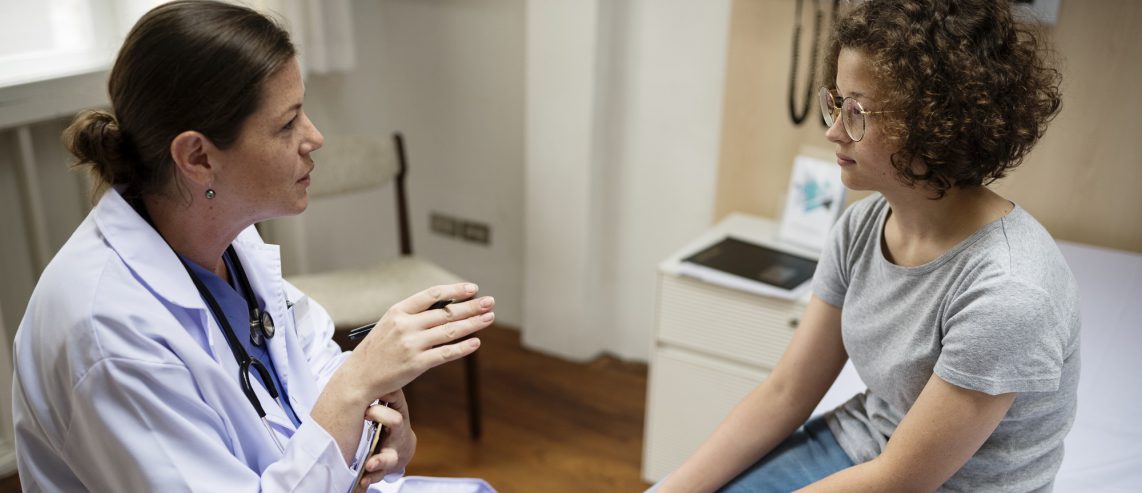If you feel random pain in any part of your body, it’s normal to worry about what’s causing it. You may wonder if you’ve injured yourself or if something else is going on.
If you’re a woman, pain in your breast can cause alarm bells to go off in your brain. You may wonder when to worry about breast pain.
You may worry something serious is going on, like breast cancer. Here’s what you should know about breast pain — and when you should talk to your doctor about it.
Never Miss a Beat!
Subscribe to Our HealthBeat Newsletter!
Thank you for subscribing!
You can now select the specific newsletters you'd like to receive.
You are already subscribed.
Subscribe to more newsletters in our email preference center.
Sorry, an error occurred. Please try again later.
Get Healthy Tips Sent to Your Phone!
What Causes Breast Pain
It’s important to know that breast pain is often not a breast cancer symptom. That’s according to the National Library of Medicine (NLM).
Mastalgia or mastodynia are two medical terms for breast pain. Though both women and men can experience breast pain, it’s more common in women. Roughly 60% to 70% of women will have breast pain at some point in their lifetime, according to the NLM.
Certain conditions can affect women’s breast health and cause breast pain, including:
Breastfeeding
Women who don’t have health problems should exclusively breastfeed their babies for at least the first six months after birth. That’s according to guidelines from the American Academy of Pediatrics.
After you give birth, your breasts will get ready for breastfeeding. They will start to feel warmer, larger, firmer, and uncomfortable. The medical term for this swelling is engorgement.
If you have severe engorgement, it can feel very painful. Feeding your baby on a frequent basis helps reduce engorgement and relieve this discomfort.
As your baby learns to suckle, you may also develop sore or tender nipples. Once your baby is well-latched, the pain should go away. Pain that doesn’t improve after two weeks can mean improper latching. According to the Centers for Disease Control and Prevention, other things that can cause breast pain during breastfeeding include:
- A clogged milk duct.
- A breast infection called mastitis. Along with pain and swelling, your breast may turn red and itchy. You may also develop chills, aches, or a fever.
Fibrocystic breast changes
Many women experience benign — non-cancerous — changes to their breasts that can cause pain in their breast and under their arm. These are called fibrocystic breast changes. According to StatPearls, these changes include:
- Breast thickening called fibrosis.
- Fluid-filled cysts in one or both breasts. This can make your breasts feel lumpy or swollen.
These changes often happen before and during your menstrual period. The pain is often worse before your period and gets better once your period starts. Fibrocystic lumps often change in size during menstruation.
Roughly 30% to 60% of women experience fibrocystic breast changes, according to the NLM. These changes are most common in women between the ages of 30 to 50. Fibrocystic breast changes don’t increase your risk of breast cancer.
Hormonal changes
According to the NLM, common reasons for hormonal changes that can cause breast pain include:
- Puberty. Both girls and boys can feel breast discomfort as they go through puberty.
- Menstruation and premenstrual syndrome (PMS). It’s normal for your breasts to swell and feel tender right before and during your period.
- Pregnancy. You may feel breast tenderness, most often in your first trimester.
- Menopause. But if you’re taking hormone replacement therapy, you may not feel any breast changes.
Medications you take
Certain medications can cause breast swelling and pain. These include:
- Chlorpromazine and other antipsychotic medicines.
- Digitalis-based medications.
- Diuretics or water pills.
- Estrogen replacement therapy.
- Methyldopa.
- Oral contraceptives or birth control pills.
- Oxymetholone.
- Selective serotonin reuptake inhibitors.
- Spironolactone.
Shingles
Shingles, a skin rash caused by the chickenpox virus, can cause a painful blistering rash your breast and chest.
When Is Breast Pain a Breast Cancer Symptom?
Breast pain is often not a sign of breast cancer. But some women may have breast pain and have breast cancer.
According to the American Cancer Society, a new breast lump or mass is often the most common sign of breast cancer. But most breast lumps are benign, and not cancerous.
You are more likely to have cancer if your breast lump or mass has irregular edges. Often these lumps are painless or hard. But some breast cancers can form soft, round, tender or even painful lumps or breast changes.
Breast cancer symptoms
In addition to a new breast lump, other possible signs of breast cancer include:
- Breast or nipple pain.
- Breast or nipple skin that is red, dry, flaking, thickened, or warm to the touch.
- Breast skin that is dimpled or looks like an orange peel.
- Nipple discharge, other than breast milk.
- Nipple that is indented or turns inward.
- Swollen lymph nodes under your arm or near your collar bones.
Inflammatory breast cancer (IBC) is a rare and aggressive type of breast cancer that often doesn’t start with a cancerous lump. Instead, according to the ACS, the most common sign of IBC is your breast looking red, swollen, or inflamed.
When Should You Talk to Your Doctor About Breast Pain?
Most breast pain is not serious. Still, some 30% of women will seek medical attention for breast pain, according to the NLM. Of these women, 20% have severe breast pain.
If you are worried about breast pain, you should schedule an appointment with your doctor if you have:
- A new lump that doesn’t go away after your period ends.
- Breast skin that is red, thick, puckered, looks like a rash, or looks like an orange peel. Or if your nipple is flattened or indented.
- Fever and/or chills with your breast pain.
- New nipple discharge or any discharge that is either bloody or clear.
- Ongoing pain that doesn’t go away after two weeks.
- Ongoing pain that gets worse even after taking over-the-counter pain medications.
- Pain that started after you began breastfeeding. Your doctor can refer you to a lactation specialist and other resources to help you with breastfeeding and pain related to breastfeeding.
- Redness or swelling in the painful area. You may have an infection.
- Signs of pregnancy and a positive home pregnancy test.
Your doctor can run tests to help figure out what’s causing your breast pain and whether it’s related to breast cancer.
Sources
Breast Pain. National Library of Medicine. MedlinePlus.gov. Link.
What to Expect While Breastfeeding? Centers for Disease Control and Prevention. Link.
Fibrocystic Breasts. National Library of Medicine. MedLinePlus.gov. Link.
Mastodynia. StatPearls. National Library of Medicine. Link.
Inflammatory Breast Cancer. American Cancer Society. Link.
Breast Cancer Signs and Symptoms. American Cancer Society. Link.
About UPMC Magee-Womens
Built upon our flagship, UPMC Magee-Womens Hospital in Pittsburgh, and its century-plus history of providing high-quality medical care for people at all stages of life, UPMC Magee-Womens is nationally renowned for its outstanding care for women and their families.
Our Magee-Womens network – from women’s imaging centers and specialty care to outpatient and hospital-based services – provides care throughout Pennsylvania, so the help you need is always close to home. More than 25,000 babies are born at our network hospitals each year, with 10,000 of those babies born at UPMC Magee in Pittsburgh, home to one of the largest NICUs in the country. The Department of Health and Human Services recognizes Magee in Pittsburgh as a National Center of Excellence in Women’s Health; U.S. News & World Report ranks Magee nationally in gynecology. The Magee-Womens Research Institute was the first and is the largest research institute in the U.S. devoted exclusively to women’s health and reproductive biology, with locations in Pittsburgh and Erie.

